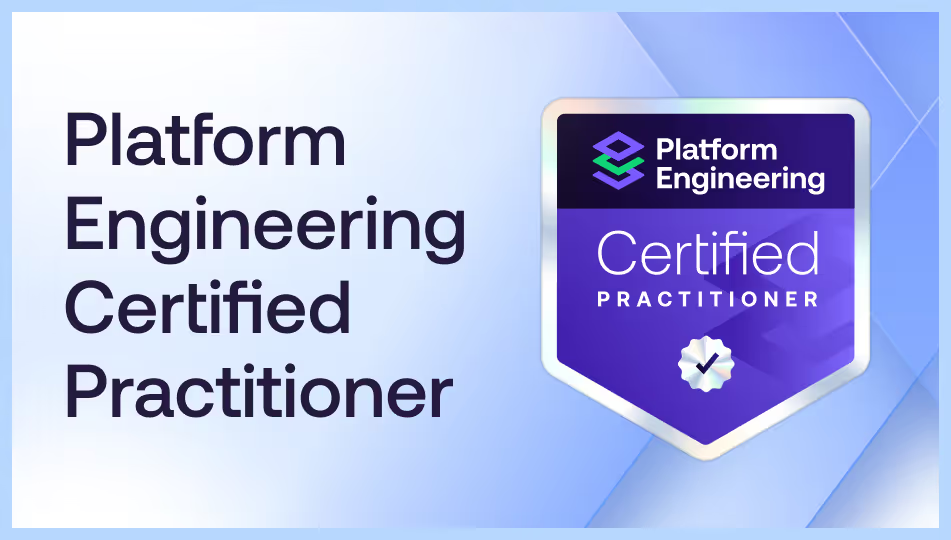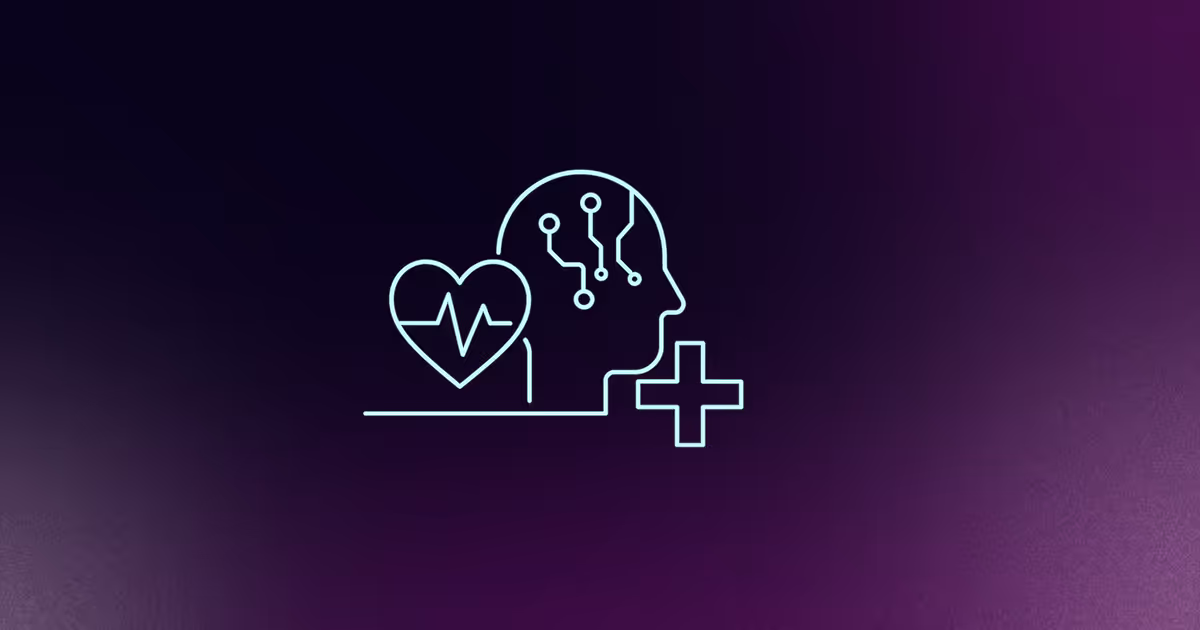Artificial intelligence is reshaping how platforms are built and used. Two phrases keep coming up in technical discussions throughout the industry: "AI-powered platforms" and "platforms for AI." These might sound similar, but they represent fundamentally different architectural approaches.
Understanding this distinction is crucial for making the right technical choices in planning and understanding your AI initiative, especially as many platform engineering teams struggle with these terms. The confusion then leads to misaligned architecture, wasted resources, and platforms that don't serve their users effectively.
This article breaks down both concepts, explains their architectural differences, and describes why clear definitions matter for anyone designing, building, or operating platforms today.
What's the real difference between AI-powered platforms and platforms for AI?
The terms currently get thrown around interchangeably, but they describe distinct architectural patterns. Understanding this distinction is the first step to making smart platform decisions.
AI-powered platforms use artificial intelligence to enhance existing developer workflows. These platforms help you troubleshoot faster, provision infrastructure automatically, and catch issues before they become problems. They integrate AI to augment the platform itself.
Platforms for AI are purpose-built to run machine learning and AI workloads. These platforms handle the specialized requirements of training models, managing massive datasets, orchestrating GPU resources, and serving AI applications at scale.
Here's a simple way to think about it: AI-powered platforms use AI to help their customers deliver on their goals better. Platforms for AI help customers use AI. Customers in this context refer to the platform's users, who are usually developers but can also be data scientists, AI engineers, etc.
The confusion brought by these distinct definitions matters because each approach requires different architecture, different skills, and different operational models. Choose the wrong one, and you'll end up with a platform that doesn't serve your users or wastes your budget on unnecessary complexity.
How AI-powered platforms actually work in practice
AI-powered platforms take your existing Internal Developer Platform (IDP) and add intelligence on top. They don't replace what you have - they make it smarter.
These platforms excel in environments where the data is structured and predictable. Platform engineering fits this perfectly because you're working with a finite set of concepts: infrastructure resources, logs, metrics, and policies. AI thrives in this kind of organized environment.
Common AI-powered platform capabilities include:
- Intelligent troubleshooting: AI analyzes logs and metrics to identify root causes faster than manual investigation
- Automated provisioning: Natural language requests get translated into infrastructure changes
- Predictive scaling: AI anticipates resource needs based on historical patterns and upcoming deployments
- Code review assistance: Automated security scanning and best practice recommendations
- Natural language interfaces: Developers can query platform status using plain English instead of complex commands
The value shows up in the user experience. Instead of learning complex commands or navigating multiple dashboards, developers can ask questions like "What's causing the high memory usage in production?" and get actionable answers.
But here's the critical caveat - AI-powered platforms work best when your existing platform foundation is already solid. If you have chaos in your current setup, AI will amplify that chaos rather than fix it.
Why platforms for AI are architecturally different
AI-native platforms aren't enhanced versions of regular platforms. They're purpose-built for a completely different type of workload with unique requirements that traditional platforms weren't designed to handle.
Machine learning workloads demand specialized infrastructure. You're dealing with massive datasets, GPU-intensive training jobs, and complex model lifecycles that traditional application platforms can't efficiently support.
Key architectural differences include:
- GPU orchestration: Scheduling and managing specialized hardware across clusters for training and inference
- Data pipeline management: Moving large volumes of data efficiently while maintaining versioning and lineage
- Model lifecycle support: Tracking experiments, managing model versions, and handling deployment workflows
- Multi-tenant isolation: Ensuring data scientists can experiment safely without affecting production workloads
- Resource elasticity: Scaling compute resources dynamically based on training and inference demands
The user experience is also fundamentally different. Instead of serving traditional application developers, you're supporting data scientists, ML engineers, and AI researchers. These users think in terms of experiments, datasets, and model performance - not microservices and deployment pipelines.
Storage requirements alone can be substantial. Feature stores, model registries, and artifact repositories become critical infrastructure components that require careful planning and governance.
The operational reality of each approach
Running AI-powered platforms versus platforms for AI means dealing with completely different operational challenges and team structures.
AI-powered platforms extend your existing operational model. You're maintaining the same infrastructure with additional AI components. The complexity comes from tuning AI models, managing false positives in automated systems, and ensuring AI recommendations stay accurate as your platform evolves.
Your team structure can largely remain focused on platform engineering fundamentals. Platform engineers learn to work with AI tools, but the core responsibilities remain centered on developer productivity and platform reliability.
Platforms for AI require new operational expertise. You're suddenly responsible for GPU cluster health, data pipeline reliability, and model serving infrastructure. The operational stakes feel different when a training job fails after consuming significant compute resources.
Team responsibilities expand significantly. You'll work closely with data scientists who understand model requirements, ML engineers who know MLOps toolchains, and potentially specialists in GPU optimization and distributed training.
The governance model changes as well. Traditional platforms might focus on code quality, security policies, and deployment standards with AI augmentation. Platforms for AI add data governance, model versioning, compliance tracking, and experiment management to the mix.
Making the architectural choice that fits your situation
The decision comes down to understanding your primary use case and organizational reality.
Choose AI-powered platforms when:
- Your main goal is to improve developer productivity on existing workloads
- You have an established internal developer platform that works well
- Your team wants to automate repetitive platform tasks
- Most of your users are traditional application developers
Choose platforms for AI when:
- You're supporting significant machine learning workloads
- Data scientists and ML engineers are key platform users
- You're training custom models or running large-scale AI applications
- GPU resources and specialized ML tooling are requirements
The mistake many teams make is thinking they can easily do both. While hybrid approaches exist, they require careful planning and typically more resources than initially expected.
Start with your user base. If you're primarily serving application developers who occasionally use AI APIs, an AI-powered platform makes sense. If you're supporting teams building and training their own models, you'll need a platform for AI.
Common implementation pitfalls and how to avoid them
Teams often underestimate the complexity of either approach. Here's what goes wrong and how to avoid it.
Tool sprawl reduces productivity. Adding AI features without coordination leads to multiple overlapping tools that nobody fully understands. Start with clear use cases and integrate AI capabilities into existing workflows rather than introducing entirely new toolchains.
Skill gaps create operational risk. Platform teams suddenly responsible for GPU scheduling or model serving without proper training struggle to maintain reliability. Invest in upskilling existing team members or bringing in specialists before rolling out new capabilities.
Governance becomes an afterthought. AI introduces new security and compliance considerations that traditional platform governance might not cover. Plan for data privacy, compliance tracking, and audit trails from the beginning.
Moving too fast, and moving too slow. Overzealous AI initiatives without proper guardrails often set unrealistic expectations, achieve low ROI, or even suffer severe risks and breakages. At the same time, overly strict security and compliance teams, and multi-month-long procurement cycles (that aim to lock in tools for years), can often limit teams' ability to experiment with tooling, but also to drop tooling that might turn out not to be best in class, or is no longer suitable for their needs.
The most successful implementations start small and focused. Pick one clear problem - like automated log analysis or GPU resource scheduling - and solve it well before expanding scope.
Building platforms that evolve with AI advancement
The AI landscape changes rapidly, and your platform architecture decisions today will affect your flexibility tomorrow.
Both AI-powered platforms and platforms for AI benefit from modular design. Build AI capabilities as pluggable components rather than tightly integrated features. This makes it easier to upgrade models, swap out tools, or add new capabilities as the technology improves.
Consider your data strategy carefully. AI-powered platforms need access to operational data like logs and metrics. Platforms for AI require robust data pipelines and storage that can handle the scale and variety of ML workloads.
The platform engineering community continues to share experiences and best practices as these approaches mature. Staying connected with other practitioners and our free Intro to AI in platform engineering course helps you learn from their successes and avoid their mistakes.
Whether you choose AI-powered platforms or platforms for AI, the goal remains the same: building infrastructure that makes your developers more productive and your applications more reliable. AI is a tool to achieve that goal, not the goal itself.
Frequently asked questions about AI platform architecture
What's the difference between AI-native and AI-powered platforms?
AI-native platforms are designed from the ground up with AI as a core component, while AI-powered platforms add AI capabilities to existing infrastructure. AI-native platforms typically offer more integrated experiences but require more upfront investment and specialized expertise.
Can you run both AI-powered features and AI workloads on the same platform?
Yes, but it requires careful resource planning and governance. The operational complexity increases significantly when supporting both traditional developers and data science teams on shared infrastructure. Most organizations find success by starting with one approach and gradually expanding capabilities as their platform matures.
How do GPU requirements affect platform architecture decisions?
GPU orchestration introduces new scheduling challenges, cost considerations, and operational complexity. If your workloads don't require GPUs for training or inference, AI-powered platforms are typically simpler to implement and maintain than full platforms for AI.
What team skills are most important for each platform type?
AI-powered platforms benefit from automation expertise and familiarity with AI tools integrated into existing DevOps workflows. Platforms for AI require MLOps knowledge, distributed systems experience, and understanding of data science workflows and model lifecycle management.
How do these approaches integrate with existing DevOps toolchains?
AI-powered platforms typically integrate more seamlessly with existing CI/CD pipelines, monitoring tools, and infrastructure-as-code workflows. Platforms for AI often require additional specialized tools for experiment tracking, model registries, and feature stores that sit alongside traditional DevOps tooling.
Ready to connect with other platform engineers navigating AI integration? Join the Platform Engineering community and connect with peers on Slack.












